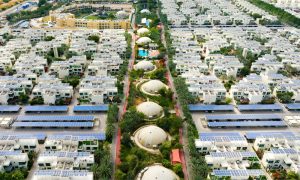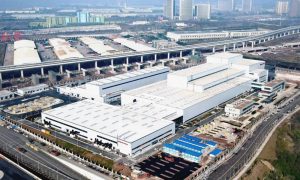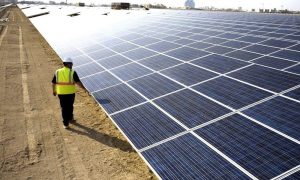Operation sustainability: Green military facilities
While you may be forgiven for not thinking of the US military as a green and “tree huggerish” organisation, Old Ironsides is actually one of the leading forces in the development and deployment of sustainable technologies. In fact, when one digs a bit deeper, the reasons for this interest become all too apparent.
With personnel nearly double the population of Dubai and a fleet of over 500,000 vehicles, the US Department of Defense (DoD) is a sprawling and energy-hungry organisation.
As the world’s largest consumer of energy, the DoD allocates over US$15 billion per year towards energy procurement. Even when only judged by this stark data, the DoD is in a natural position to take the lead in the implementation of sustainable technologies. When this is added to the strategic and risk heavy components of logistics transport security (80% of convoys are fuel trucks and 40% of all combat causalities are logistics related), it is no wonder that the military is taking aim at these issues and is investing heavily in clean renewable fuels, water efficiency and waste reclamation measures.
According to Dr Ash Carter, the Undersecretary of Defense for Acquisition, Technology, and Logistics, “protecting large convoys (fuel, water, food) imposes a huge burden on combat forces” and “reducing these demands would move the department more towards an efficient force structure by enabling more combat forces supported by fewer logistics assets, reducing operating costs, and mitigating budget effects caused by commodity price volatility.” Essentially, it is expensive in terms of both financial and human commitments to keep military bases, especially forward operating bases, stocked with water and fuel. Therefore, in a similar although more urgent manner to what we experience in the civilian sector, sustainability is a force multiplier and it makes pure economic sense for the military to develop its green credentials.
In late 2010 the DoD and Department of Energy (DOE) signed an agreement to identify a framework for cooperation and partnership in the development and testing of sustainable energy technologies. Since then the Pentagon has committed to investing US$10 billion per year in Cleantech deployment, the Airforce has committed to obtaining 60% of its liquid fuel requirements from bio-derived sources, and 20 Army bases have been signed up as net zero pilot projects. Of the 20 currently operating Army installations, six have been identified in each of the energy, water and waste categories and two integrated installations are striving for net zero (in all three categories) by 2020. Each of these bases, in their respective categories, will only consume as much energy or water as they produce and will eliminate solid waste sent to landfills.
Interestingly enough, the DoD began investing in renewable energy in the early 1980s with a 270-megawatt geothermal power plant at the China Lake Naval Air Weapons Station (California) which supplies power for the entire base, and more recently with a 0.6 square km solar farm at Nellis Air Force base (Nevada) which is the second largest solar installation in the US.
What does this mean for the broader population? Because military bases often function as fully operational towns, the lessons learned and the approaches applied there could be applied more broadly in civilian towns and cities. In addition when looked at from the perspective of remote forward operating bases which are typically off grid, there is potential of harnessing some of these technologies in the developing world where the infrastructure is not as robust and the local population is in need of technologies which will enable them to “leapfrog” energy and water availability in a similar nature to cell phones leapfrogging landline distribution infrastructure.
As with the investment in the technologies behind the Internet and the military research that served as the basis for the civilian nuclear power industry, the military challenges solved through innovation at the DoD’s sustainable laboratories is expected to yield spin-off technologies that will benefit the civilian and community as well.
Next on the horizon, the hybrid hydrogen fuel-cell Abrams tanks…
Jourdan Younis is the Managing Director for Alpin Limited, Masdar City – Abu Dhabi, an instructor for LEED at American University of Sharjah and an instructor for Estidama at the Urban Planning Council – Abu Dhabi. His background spans London Business School, California Polytechnic University, and several international sustainability consulting operations including Sowwah Square in Abu Dhabi and the Energy Foundation in San Francisco. Contact him at jourdan.younis@alpinme.com
























